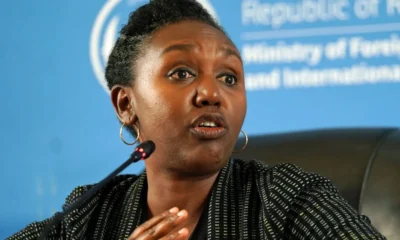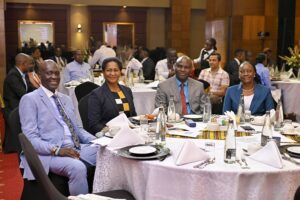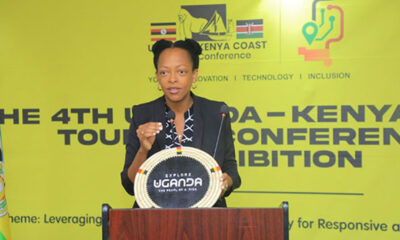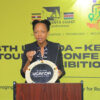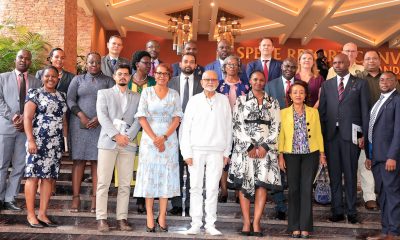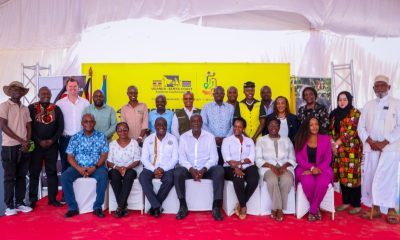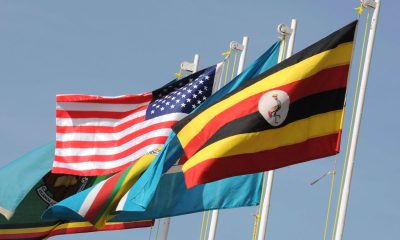Tourism
Uganda Unveils Ambitious National Tourism Strategy to Spread Benefits and Redefine National Identity
Uganda has officially launched its first-ever National Destination Marketing Strategy (NDMS) for the period of 2024–2029, signaling a bold new direction for the nation’s tourism sector. This comprehensive five-year plan aims to elevate Uganda’s standing as a premier international tourism destination while strategically addressing regional economic imbalances and enriching the country’s national identity through mindful tourism practices.
The unveiling of the NDMS comes at a crucial juncture for Uganda’s tourism industry. While the sector contributed a significant 5.3% to the nation’s GDP in 2023 according to the Ministry of Tourism, the economic benefits have historically been concentrated in the southwestern corridor. This region, renowned for iconic natural attractions like the Bwindi Impenetrable Forest (home to 53.9% of the world’s mountain gorillas) and Queen Elizabeth National Park, has long been the primary magnet for international visitors.
The new strategy seeks to broaden this appeal, actively promoting the diverse and often untapped potential of the northern and eastern regions. Acting CEO of the Uganda Tourism Board (UTB), Bradford Ochieng, emphasized this inclusive vision, stating, “The NDMS isn’t just about bringing tourists in; it’s about ensuring that the benefits of tourism flow to all regions, especially those historically overlooked by the mainstream safari economy.”
This strategic shift involves spotlighting previously under-promoted destinations such as the rugged savannahs of Karamoja, the cultural heritage of West Nile, and the historical significance of Busoga, home to the Source of the Nile. In these areas, tourism is envisioned as more than just an economic driver, playing a vital role in peacebuilding, creating opportunities for youth employment, and fostering infrastructure development. Ochieng highlighted Karamoja’s potential, noting its “extraordinary untapped potential” and the opportunity to reshape negative perceptions.
Key to achieving this decentralization of tourism is significant infrastructure investment. The NDMS outlines plans for upgrading airstrips in Arua and Soroti, alongside improvements to road networks connecting national parks beyond the traditionally popular western axis. These developments aim to facilitate easier access to new tourism zones and encourage investment in community-based accommodations and authentic, experience-driven tourism offerings.
Furthermore, the NDMS marks a pivotal moment in how Uganda presents itself to the world. For too long, the country’s global tourism brand has predominantly focused on its remarkable natural wonders – mountain gorillas, the Nile River, and Lake Victoria. The new strategy actively seeks to highlight Uganda’s rich tapestry of ethnic and historical diversity.
UTB Chairperson, Pearl Kakooza, articulated this shift, stating, “The NDMS emphasizes cultural mapping and storytelling from underrepresented communities. We are reimagining tourism as a national mirror, not just a foreign window.”
While the NDMS has been met with considerable optimism, some critics have raised concerns, pointing to past implementation challenges and the potential for land disputes and environmental degradation in newly developed tourism corridors if proper safeguards are not put in place.
However, the inclusive approach taken in developing the strategy, which involved consultations across more than 60 districts, offers a strong foundation for success. If effectively implemented, the NDMS has the potential to be a transformative turning point for Uganda, seamlessly blending economic ambitions with tangible social progress and establishing tourism as a powerful driver of inclusive development.
The strategy also aims to capitalize on Uganda’s burgeoning MICE (Meetings, Incentives, Conferences, and Exhibitions) segment. In 2023, Uganda hosted 7,725 MICE delegates, marking an impressive 122% increase from 2022. These high-value visitors contribute significantly to the local economy, with an average daily expenditure of $453. Officials estimate that a single MICE event can inject up to $500,000 into the local economy, and Uganda aims to rank among Africa’s top five MICE destinations by 2029.
UTB’s Senior Brand Officer, Daniel Irunga, emphasized this focus on quality over quantity, stating, “We’re targeting visitors who contribute more to the economy while preserving our environment and culture.” He also highlighted Uganda’s existing strengths, including being home to over 1,200 bird species (11% of the global total) and boasting 10 national parks.
Speaking at the launch on behalf of the Minister, Basil Ajer, Director of Tourism at the Ministry of Tourism, Wildlife and Antiquities, underscored the rising global demand for responsible travel and pledged full government support for the UTB in implementing the strategy. He noted that the NDMS is poised to attract higher-value visitors and deliver tangible benefits to local communities.
With tourism identified as a key economic driver for Uganda, the NDMS, alongside the ongoing Explore Uganda campaign, represents a unified national effort towards a sustainable and inclusive future for the industry. It champions the empowerment of women, youth, and rural communities, paving the way for a truly national tourism narrative.
Comments








